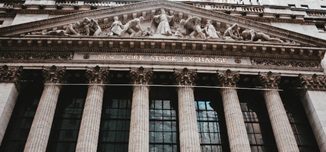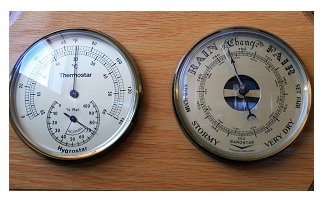By Ben Bernanke
First steps for easing policy
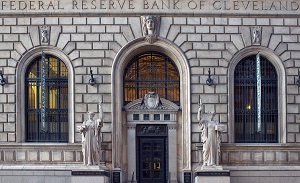
Given where we are today, how would the Fed respond to a hypothetical economic slowdown?
- Presumably the central bank’s first response, after dropping any plans to raise rates further, would be to cut short-term interest rates, perhaps to zero.
- Unfortunately, with the fed funds rate (the Fed’s target short-term rate) now between ¼ and ½ percent, and likely to remain relatively low, moving to zero provides much less firepower than in the past…
- With the fed funds rate near zero, the FOMC could next turn to forward guidance, that is, to communicating to markets and the public about the Fed’s policy plans.
- If the Fed can convince market participants that short-term rates will stay low for some time, it can “talk down” longer-term rates, such as mortgage rates, which are typically more important to consumers, businesses, and investors…The evidence suggests that forward guidance can be quite powerful, and if the amount of extra policy support needed is not too great, rate cuts plus guidance might be all that is needed.
- The rate cuts plus guidance might be all that is needed but what if not? The Fed could resume quantitative easing (QE), that is, purchases of assets (typically longer-term assets) for the Fed’s portfolio, financed by the creation of reserves in the banking system.
- Like forward guidance, the goal of QE is to reduce longer-term interest rates to encourage borrowing and spending. It appears to work through at least two channels.
- First, the Fed’s purchases push up the price and (equivalently) push down the yield of the assets it buys. That effect is transmitted through the system as investors who sold the assets shift into others (such as stocks or corporate bonds).
- Second, the Fed’s asset purchases can help signal its intention to keep rates low for a long time…[but] the FOMC might be reluctant to turn to it again.
- Like forward guidance, the goal of QE is to reduce longer-term interest rates to encourage borrowing and spending. It appears to work through at least two channels.
Given the above, the Fed might want to consider other options. Negative interest rates are one possibility.
Negative interest rates: general considerations
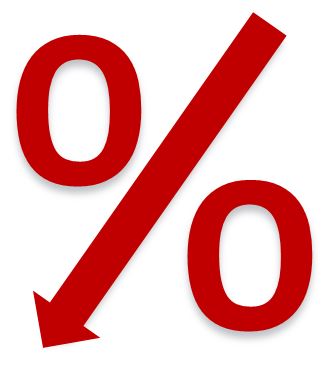 In practice, this means that, instead of receiving interest on the reserves they hold with the central bank, banks are charged a fee on reserves above a threshold. The expectation is that, to avoid the fee, banks will shift to other short-term assets, which drives down the yields on those assets as well, possibly to negative levels.
In practice, this means that, instead of receiving interest on the reserves they hold with the central bank, banks are charged a fee on reserves above a threshold. The expectation is that, to avoid the fee, banks will shift to other short-term assets, which drives down the yields on those assets as well, possibly to negative levels.
- Ultimately, the efforts of banks and other investors to avoid negative returns on the shortest-term assets should lead to declines in a broad range of longer-term interest rates, such as mortgage rates and the yields on corporate bonds (though, generally, we’d expect these longer-term rates to remain positive, because of the extra compensation that investors demand for bearing credit risk and for tying up their money for longer periods).
- By putting downward pressure on the interest rates most relevant to borrowing and spending decisions, the introduction of negative interest rates should work through the same channels as more standard monetary policies.
The idea of negative interest rates strikes many people as odd. Economists are less put off by it, perhaps because they are used to dealing with “real” (or inflation-adjusted) interest rates, which are often negative. Since the real interest rate is the sticker-price (nominal) interest rate minus inflation, it’s negative whenever inflation exceeds the nominal rate.
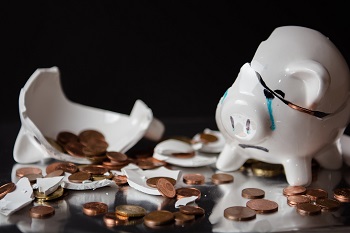
So far the Fed has had no need to implement a negative interest rate in order to ease policy:
- Until 2008, the nominal fed funds rate was always well above zero, so that ordinary interest rate cuts remained feasible when needed.
- Since late 2008, however, the fed funds rate has been barely above zero much of the time, so that achieving further reductions in the real funds rate would have required taking the nominal rate negative.
- In principle at least, how much extra pop could this policy have delivered? If during this period the Fed had decided (and been able) to lower the short-term nominal interest rate to, say, -0.5%, then it presumably could have achieved a real fed funds rate half a percentage point lower as well. The amount of extra stimulus generated by this further reduction in rates would not have been negligible by any means (roughly, it would have corresponded to two extra quarter-point rate cuts in more normal times), but neither would it likely have been a game-changer…
//
…to continue reading the full post of this article, please visit “Ben Bernanke On the Pros & Cons of Negative Interest Rates”.
//
munKNEE.com is a new affiliate of eResearch.com. To learn more about munKNEE.com, please visit their website and sign-up for their weekly newsletter.


